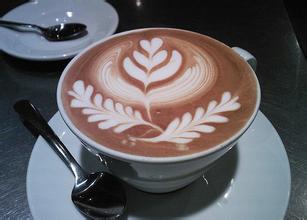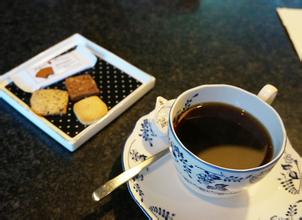Introduction to the Grinding Calibration of Japanese hand-made Coffee
The biggest difference is that the American hand flushes the coffee powder with a stirring stick, which is similar to the way we make siphon pots, or stir-fry with heavy water, while Japanese, Korean, Taiwan and domestic hand-made coffee only uses water to draw circles. Coffee powder is rarely stirred with sticks or bamboo slices.
Hand Chong American style, Japanese style and other genre techniques, after watching the change of hand Chong Master
American style: large current, strong water column, impact stir-fried coffee powder, with the help of stirring bar disturbance, fine grinding, high water temperature, short hand flushing time
Japanese style: small water flow, drip, gently touching and kneading coffee powder, coarse grinding powder, low water temperature, long hand flushing time
In terms of bald du comments, the American style is like a robber, rudely extracting the essence of coffee powder. The Japanese style is like the character of the oriental nation, moistening the rain silently and gently.
To sum up, it is roughly like this, but with the continuous development of hand-impact theory, American-Japanese techniques continue to integrate, learn from each other, and develop quite a number of schools, so it is not very good to divide the American-Japanese style.
4 scale (suitable for light taste or reducing the bitterness of deep-baked bean coke)
3-3.5 scale (moderate shade, suitable for light baking, medium baking or medium-deep baking)
2.5 scale (suitable for heavy taste, but not for deep baked beans)
The smaller the scale of the bean grinder is, the finer the grinding is, and the thicker the coffee is. As far as the small flying eagle bean grinder, which is most commonly used by hand, is concerned, the scale of 3: 3.5 is moderate, which is the most suitable for hand flushing. If you adjust it to scale 4, it can also be used for hand-flushing re-roasted beans or shallow medium-roasted coffee beans, but the extraction rate is too low, so there should be psychological preparation for insufficient extraction and too thin taste.
Hand flushing with 3 scales is the safest, and is suitable for light, medium and deep baked popular tastes, but deep baked beans may be too bitter if they are hand washed at 3 scales. If you adjust the half-scale to 2.5 scale, the extraction rate will be about 0.5%-1.5% higher than the 3 scale, the amplitude is very large, the room for tolerance for mistakes becomes smaller, the water temperature is too high or the extraction time is too long, and it is easy to flush out bad coffee with a slight error.
But some heavy-flavored coffee lovers like light roasted, medium-roasted and medium-deep roasted coffee with about 2.5 hands, because the sense of stickiness and smoothness is better than that of 3 scales, and the aftertaste is far-reaching. Deep baked beans entering the dense stage of the second explosion had better not be hand-flushed at 2.5 scale, and the failure rate is very high.
Deep-roasted coffee has a higher extraction rate and should be ground slightly, but unless you like sour taste, such as serving light-roasted Geisha at a scale of 2.5
Panama or Kenya, it is easy to extract more solute and become more acidic. If you like shallow baking but are afraid of too sour mouth, it is suggested that you can adjust a bit thicker to 3.5 degrees to inhibit the dissolution of acid. Take hold of the thickness, except watch the baking.
In addition to the roasting degree, it is more important to understand the characteristics of coffee beans. It is difficult to have a consistent grinding degree for brewing coffee.

Important Notice :
前街咖啡 FrontStreet Coffee has moved to new addredd:
FrontStreet Coffee Address: 315,Donghua East Road,GuangZhou
Tel:020 38364473
- Prev

What ingredients can be paired with creative lattes?
If you add some frothy cold milk to the hot milk, it becomes an American latte. Starbucks American lattes are made this way: espresso at the bottom, milk heated to 65-75 ℃ in the middle, and cold milk foam no more than half a centimeter. Iced latte coffee uses a mixture of fructose and milk to increase the specific gravity of milk.
- Next

Introduction to the roasting degree treatment method of Arabica Coffee brewing ratio Coffee Tree-producing area
In Palestine, drinking coffee is more about expressing an attitude. When you are a guest in a Palestinian house, the host had better drink all the coffee, because if you don't drink it, they will think that you have a problem with them, or that you are here to make trouble. Palestine is a family society. When there is a conflict between families and one side goes to the other's house to reconcile, after pouring the coffee, it comes.
Related
- Beginners will see the "Coffee pull flower" guide!
- What is the difference between ice blog purified milk and ordinary milk coffee?
- Why is the Philippines the largest producer of crops in Liberia?
- For coffee extraction, should the fine powder be retained?
- How does extracted espresso fill pressed powder? How much strength does it take to press the powder?
- How to make jasmine cold extract coffee? Is the jasmine + latte good?
- Will this little toy really make the coffee taste better? How does Lily Drip affect coffee extraction?
- Will the action of slapping the filter cup also affect coffee extraction?
- What's the difference between powder-to-water ratio and powder-to-liquid ratio?
- What is the Ethiopian local species? What does it have to do with Heirloom native species?

